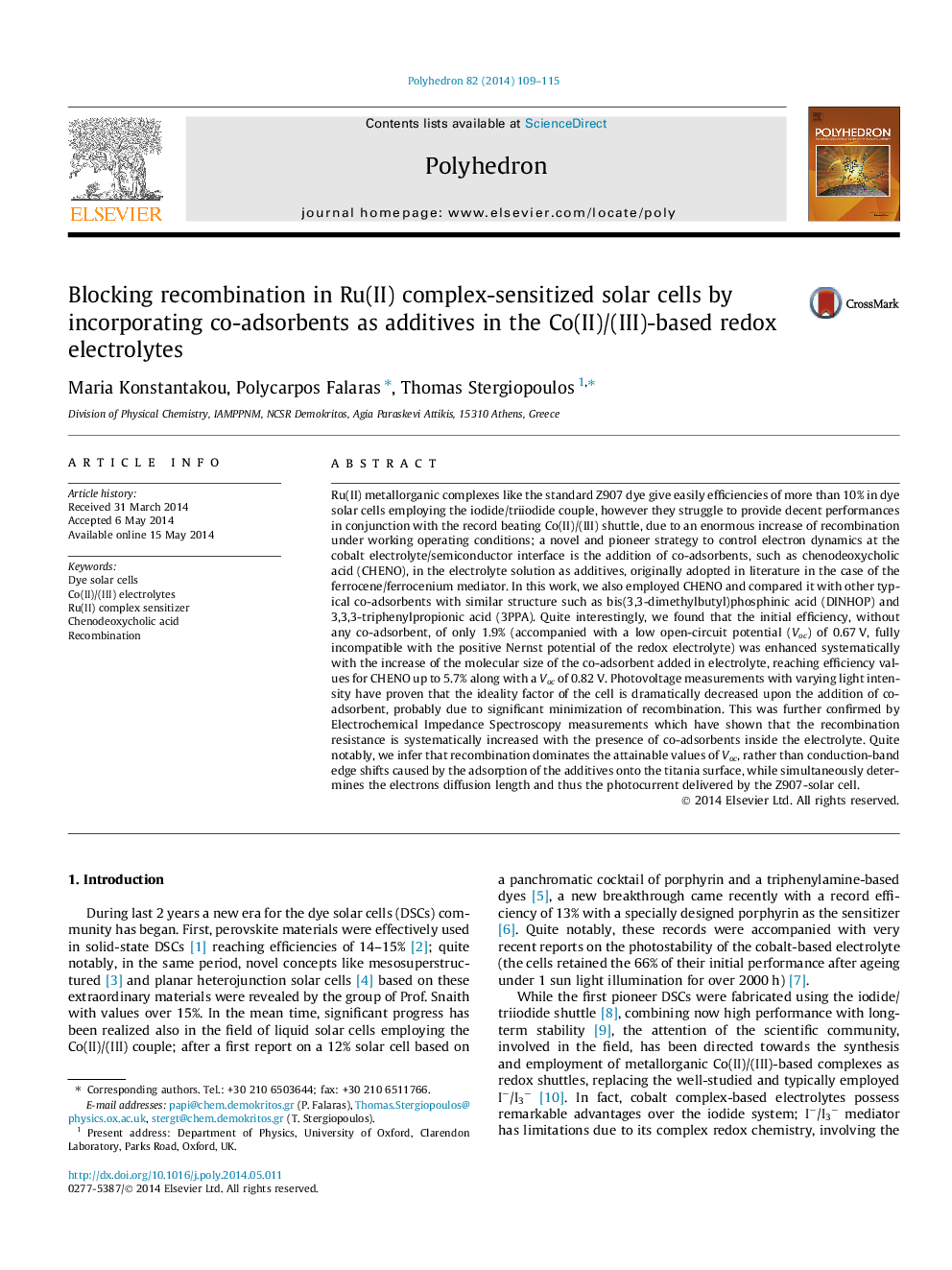| کد مقاله | کد نشریه | سال انتشار | مقاله انگلیسی | نسخه تمام متن |
|---|---|---|---|---|
| 1336444 | 1500257 | 2014 | 7 صفحه PDF | دانلود رایگان |

Ru(II) metallorganic complexes like the standard Z907 dye give easily efficiencies of more than 10% in dye solar cells employing the iodide/triiodide couple, however they struggle to provide decent performances in conjunction with the record beating Co(II)/(III) shuttle, due to an enormous increase of recombination under working operating conditions; a novel and pioneer strategy to control electron dynamics at the cobalt electrolyte/semiconductor interface is the addition of co-adsorbents, such as chenodeoxycholic acid (CHENO), in the electrolyte solution as additives, originally adopted in literature in the case of the ferrocene/ferrocenium mediator. In this work, we also employed CHENO and compared it with other typical co-adsorbents with similar structure such as bis(3,3-dimethylbutyl)phosphinic acid (DINHOP) and 3,3,3-triphenylpropionic acid (3PPA). Quite interestingly, we found that the initial efficiency, without any co-adsorbent, of only 1.9% (accompanied with a low open-circuit potential (Voc) of 0.67 V, fully incompatible with the positive Nernst potential of the redox electrolyte) was enhanced systematically with the increase of the molecular size of the co-adsorbent added in electrolyte, reaching efficiency values for CHENO up to 5.7% along with a Voc of 0.82 V. Photovoltage measurements with varying light intensity have proven that the ideality factor of the cell is dramatically decreased upon the addition of co-adsorbent, probably due to significant minimization of recombination. This was further confirmed by Electrochemical Impedance Spectroscopy measurements which have shown that the recombination resistance is systematically increased with the presence of co-adsorbents inside the electrolyte. Quite notably, we infer that recombination dominates the attainable values of Voc, rather than conduction-band edge shifts caused by the adsorption of the additives onto the titania surface, while simultaneously determines the electrons diffusion length and thus the photocurrent delivered by the Z907-solar cell.
Three typical co-adsorbents (chenodeoxycholic acid, bis(3,3-dimethylbutyl)phosphinic acid and 3,3,3-triphenylpropionic acid) were incorporated as additives in Co(II)/(III) electrolytes to block interfacial recombination caused by the presence of Ru(II) complexes as sensitizers in TiO2 solar cells. Chenodeoxycholic acid proved to be the most effective, enhancing the efficiency from 1.9% up to 5.7%.Figure optionsDownload as PowerPoint slide
Journal: Polyhedron - Volume 82, 4 November 2014, Pages 109–115